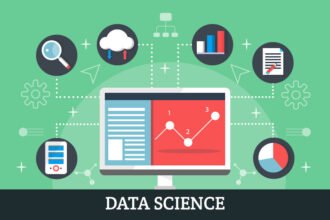There are a lot of ways that organizations can leverage big data. Most of them don’t have difficulty collecting the data they need to make more informed decisions. However, they often struggle to conceptualize the data and present it in a format that supports their conclusions. This is one of the areas where a business dashboard can be useful.
Big data has made business dashboards possible. But how can managers use them effectively?
Big Data Makes Business Dashboards Viable Management Tools
There are a lot of benefits of big data. However, many companies lose sight of the big picture. They dedicate so much of their time to collecting big data that they don’t have a way to apply it.
Business dashboards are among the best platforms for utilizing big data. They use big data to assist decision makers in a number of ways.
Businesses deal with a lot of data every day. Big data is changing the way they operate. The quest to collect more data can sometimes get in the way of valuable data that provides clear, relatable, and up-to-date information that helps you make critical business decisions.
This is where a business dashboard could potentially help. A business dashboard is a data management tool used to track key performance indicators (KPIs), metrics and other relevant data points for your business. A digital dashboard is an electronic interface that combines visual data from many sources, which may include databases, locally hosted files, and web services. These dashboards let you monitor your business performance by display historical trends, actionable data, and real-time information.
The information that is provided in a real-time business dashboard is clean, consistent, and easy to understand. It is ideally accessible by any employee in your business. They can view the panel and know which KPIs to focus their attention on. For example, the marketing department could have real-time information on the dashboard of visitors to lead conversion rates.
A business dashboard puts the most vital data and goals front and center at all times. Another benefit of the dashboard is that the data is always up to date. A dashboard saves time in various ways. This means that an administrative or marketing assistant does not have to spend multiple days gathering data into an excel sheet every month. It also means that there is no wait time on getting up to date information, since the data is always kept up to date on a dashboard, which allows for split-second decisions if strategies need to be refocused.
Dashboards help decision-makers keep their businesses moving forward without any unnecessary hiccups. Business dashboards make it easier to understand the data, fix ineffective business processes, and identify new business opportunities through the right visualizations. Before you can start the process of building a dashboard for your business, you need to ask yourself these essential questions:
Who are the end-users of the dashboard?
Your business dashboard should be built around the needs of your target audience. It should also consider how they will interact with all relevant data. Your target audience will be either IT users, executives, business users, or data analysts.
What can a well-optimized dashboard accomplish?
Decision makers prefer using dashboards, because they offer a lot of strong visual data. They can create a variety of graphs to form more informed insights. A well-working dashboard should convey the information quickly and in a format that is simple to understand.
You need to identify the metrics that you want to encapsulate with your data, and decide if it is necessary to focus on all the data that is being gathered. You will have to consider grouping information, selecting the best possible widgets and colors to make the dashboard easy to understand. You will also need to focus on filtering information to ensure data is only shown when necessary and that the dashboard is universal for necessary users.
How should data be handled best?
There are both extract and direct forms of data handling. Live data handling tends to be the most straightforward approach, while extract data handling enables the company to export it to a central database. The extract method eliminates the need to perform database queries. Data analysts can choose which format is best for any given situation.
What are the best options for visualizing the data
There are many ways to represent data in a graphical format. These formats can offer a lot of flexibility to decision makers, especially if they have an easier time conceptualizing data in a graphical format. They can choose from a variety of graphical representations, which makes it a lot easier for them to communicate their findings and defend their decisions to their peers.
What are the best ways to retrieve data from the dashboard?
Access to the business dashboard can be granted by using almost every type of device. The best format to access data depends on your general objectives. You can use a dashboard merely to monitor data. You can also use it to manage user interactions.
The desktop dashboard is often the most convenient. It can be useful for handling work within the browser. If you need to do a lot of work with KPIs, then a desktop dashboard would be your preferred choice. Mobile displays are useful as well. However, the screens are not as large, which is a clear limiting factor. If you are looking just to monitor the business dashboard performances you will prefer a mobile dashboard.
Big Data Makes Business Dashboards Viable Decision-making Tools
Big data has opened a number of new doors for businesses, but they need to know how to apply it properly. A business dashboard can help businesses take advantage of big data in many ways. It can serve as the backbone of your business strategies. A business dashboard is an excellent tool for gathering data into one place and has many benefits such as KPIs in one place, big data accessibility, sales and marketing reports in one place, saves time, and money, target future customers, always have up to date data, automated reporting, and knowing how well campaigns are performing.







